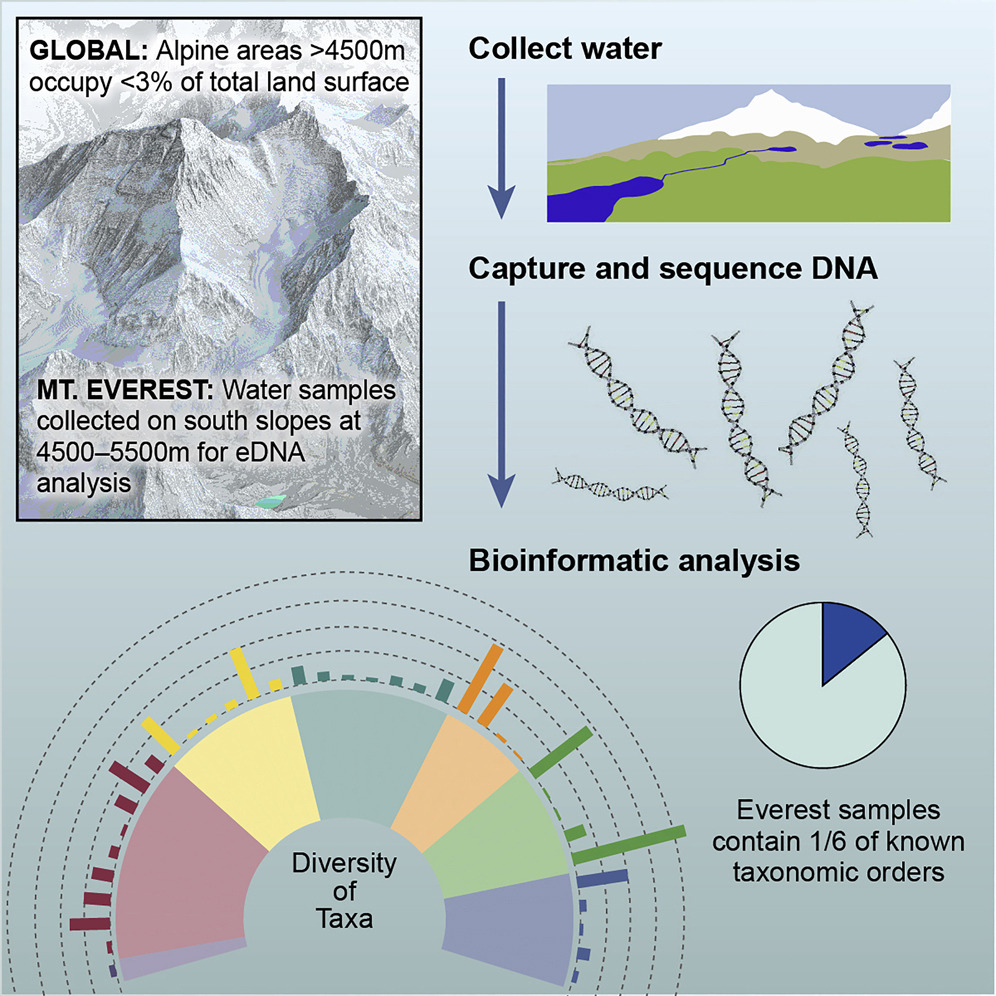The study underscores the significance of indoor PM2.5-10 pollution from coal combustion as an environmental risk factor for the prognosis of COPD patients, emphasizing the need for targeted prevention and control strategies during the heating season to protect cardiopulmonary health and promote progress towards Sustainable Development Goal 3 (Good Health and Well-being).
This work is the first comprehensive eDNA biodiversity survey conducted on Earth’s highest mountain, Mount Everest. Species composition in high-alpine ecosystems is a useful indicator for monitoring climatic and environmental changes at the upper limits of habitable environments, which highlights the potential importance of this study to future works in this area.
This Article supports SDG 3, 7, and 8 by showing an inverse association between air pollution attributed to disease burden and gross state domestic product for most states in India, thus highlighting the need to curtail air pollution attributed to disease burden in order to achieve sustainable economic growth.
An Article on suicide and self-harm, in the context of SDG 3, focusing specifically on the impact of the COVID-19 pandemic on presentations of self-poisoning in Sri Lanka.
Elsevier,
J. Indu, Akhilesh S. Nair, Ankita Pradhan, Rohit Mangla, Sooraj Krishnan, Kaushlendra Verma, Vinayak Huggannavar; Radar Remote Sensing, 2022, Pages 123-148
This chapter contributes to SDG 6 by using radar remote sensing to measure terrestrial water budget elements such as precipitation, soil moisture, and surface water levels.
Diagnosis and Treatment of Traumatic Brain Injury, 2022, Pages 27-38
This book chapter advances SDG #3 and #10 by focusing on an emblematic delayed-onset pathology often seen after traumatic brain injury—Alzheimer’s disease—and explain its relationship with chronic traumatic encephalopathy.
This article contributes to the debate around the use of participatory approaches by giving a tool (cameras) to the most marginalized to revitalize traditional foods (mostly nonmarket and even noncultivated) as a response to food insecurity and possibly malnutrition.
Strategies to decarbonize the hard to abate iron and steel sector.
The variations in organizational features and processes linked to implementation activities across two clinics provided an opportunity to examine how and why different contextual factors help or hinder the implementation process. Findings from this study demonstrate that successful implementation of an integrated depression and diabetes care model is feasible in a low-resource setting, while the revised program theories provide an explanatory framework of coordinated care implementation processes that can inform future efforts to disseminate and scale this care model.
Cities are at the forefront of the global challenges of climate change. Compared to other urban problems, the complexity and uncertainty of climate change presents new governance challenges.

